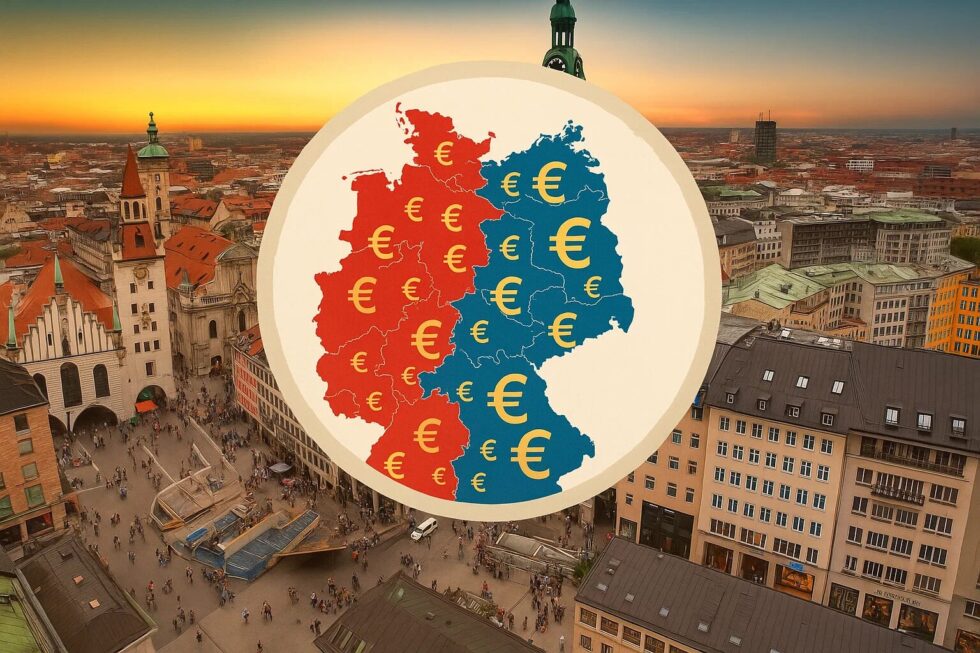Where Is Housing More Affordable: East or West Germany

Housing prices in Germany remain one of the most debated topics in real estate and social policy. The comparison between East and West Germany continues to reflect deep economic, cultural, and demographic differences even more than three decades after reunification. Key cities like Berlin, Leipzig, and Dresden often attract young professionals, while Munich, Frankfurt, and Hamburg set some of the highest property benchmarks in Europe. Renters and buyers face contrasting realities depending on whether they choose the eastern or western federal states. Understanding the reasons behind these disparities is crucial for families, investors, and policymakers alike. As noted by G.business, the differences are not just about money but also about infrastructure, job opportunities, and quality of life.
Historical roots of the price gap
The current housing situation cannot be understood without looking at history. After reunification in 1990, many East German cities experienced depopulation, as younger people moved west in search of better jobs and higher salaries. This created an oversupply of housing in some regions, pushing prices downward. In contrast, West Germany already had strong urban centers, high employment, and stable demand, which translated into more expensive housing markets. Over time, some eastern cities began to recover, but the structural gap remained.
For example, Berlin—once divided—saw exponential growth in prices since the 2000s, especially in the western districts. Leipzig and Dresden, however, remain among the most affordable major cities despite their rising popularity. This east-west divide continues to influence buyer decisions and migration trends.
Key historical reasons for the housing gap:
- Post-reunification depopulation in the East
- Higher salaries in the West attracting more workers
- Established infrastructure and business hubs in western cities
- Ongoing investment disparity between regions
- Cultural differences in property ownership and renting traditions
Current average housing prices in East vs. West
The price difference today remains significant, although it has narrowed in some areas. In 2024, the average price per square meter for an apartment in Munich exceeded €9,500, while in Leipzig it was around €3,200. This shows that western Germany is still much more expensive, particularly in Bavaria, Baden-Württemberg, and parts of North Rhine-Westphalia.
Eastern Germany offers lower entry points for buyers, making it attractive for first-time homeowners and investors. However, wages in the East remain lower on average, which partially offsets the benefits of cheaper housing. Additionally, some smaller towns in the East still suffer from population decline, limiting long-term investment potential.
Average apartment purchase prices (€/m², 2024):
| City | Region | Average Price €/m² | Trend 2020–2024 |
|---|---|---|---|
| Munich | West | 9,500 | +32% |
| Frankfurt am Main | West | 7,800 | +28% |
| Hamburg | West | 6,900 | +24% |
| Berlin | East/West | 5,800 | +40% |
| Leipzig | East | 3,200 | +35% |
| Dresden | East | 3,500 | +29% |
| Chemnitz | East | 2,500 | +18% |
Rental market comparison
For renters, the difference is just as clear. West German cities often face housing shortages due to high demand from both locals and international workers. Munich, Stuttgart, and Frankfurt have some of the highest rents in Europe. In the East, rents are more affordable, but demand is increasing in Leipzig and Dresden due to their growing status as cultural and tech hubs.
While an average one-bedroom apartment in Munich can cost around €1,500 per month, the same type of apartment in Leipzig averages €700–€800. Berlin represents a mixed case, where rents are still lower than in Munich or Frankfurt but have risen rapidly in recent years, particularly in the eastern districts.
Rental comparison (average monthly rent for a one-bedroom, 2024):
- Munich: €1,500–1,700
- Frankfurt: €1,300–1,500
- Hamburg: €1,200–1,400
- Berlin: €1,000–1,200
- Leipzig: €700–800
- Dresden: €750–850
- Chemnitz: €500–600
Quality of life and infrastructure differences
Beyond prices, the choice between East and West Germany depends heavily on lifestyle expectations. Western cities often provide stronger infrastructure, better schools, and more international job opportunities. Airports, highways, and high-speed train connections are more developed in western regions.
However, many eastern cities offer advantages such as lower cost of living, shorter commuting times, and less overcrowding. Leipzig, for instance, is emerging as a cultural hotspot with thriving art, music, and tech scenes. Dresden combines affordable housing with strong universities and historical architecture. For families seeking space, Eastern Germany often provides larger apartments and houses for the same price as a small flat in the West.
Main factors influencing quality of life:
- Employment opportunities and average wages
- Access to universities and cultural institutions
- Healthcare and public infrastructure
- Transport connections within Germany and abroad
- Environmental factors like air quality and green spaces
Investment perspectives for the future
Real estate investors view the East as a market with high growth potential, particularly in Leipzig and Dresden. Prices remain relatively low compared to western cities, but demand from young professionals and students is rising. Berlin continues to attract international investors, although regulations on rent control have complicated profitability.
In contrast, western cities like Munich and Frankfurt are considered “safe havens” for investment but have limited room for further price growth due to already high levels. Experts suggest that eastern German cities might offer better returns in the long run, though risks remain in areas with shrinking populations.
Attractive investment markets (2025 outlook):
- Leipzig – cultural hub and student city
- Dresden – mix of affordable housing and growing demand
- Berlin – international market with complex regulations
- Munich – stable but highly expensive market
- Hamburg – strong demand, especially in logistics sector
Practical advice for buyers and renters
For buyers: Choosing between East and West depends on whether affordability or long-term security is more important. Eastern Germany is ideal for younger buyers entering the market, while the West may be better for those seeking stable, established property markets.
For renters: Consider your career and lifestyle goals. If you work in international finance or tech, Frankfurt or Munich may be unavoidable despite high rents. If you value culture, affordability, and space, Leipzig and Dresden are excellent alternatives.

Tips for decision-making:
- Research local job markets before moving
- Consider long-term family planning needs
- Factor in transportation and commuting costs
- Compare property taxes and additional housing fees
- Explore future urban development projects in chosen cities
Housing in Germany continues to reflect the deep historical and economic contrasts between East and West. While western regions like Munich, Frankfurt, and Hamburg remain significantly more expensive, they offer higher wages, better infrastructure, and stronger international job markets. Eastern cities such as Leipzig and Dresden stand out as affordable yet increasingly attractive alternatives, particularly for young families, students, and investors searching for growth potential.
The decision between East and West is not only financial but also personal, depending on career goals, family needs, and lifestyle expectations. Those seeking stability and prestige may lean toward the West, while those prioritizing affordability and cultural vibrancy may find the East more suitable. Over the next decade, experts predict that the price gap will continue to narrow, making eastern cities even more appealing for those who want to balance cost and quality of life in Germany.
Stay connected for news that works — timely, factual, and free from opinion — and insights that matter now: What is happening to Bavaria: Where buying an apartment by 2035 could be a smart move